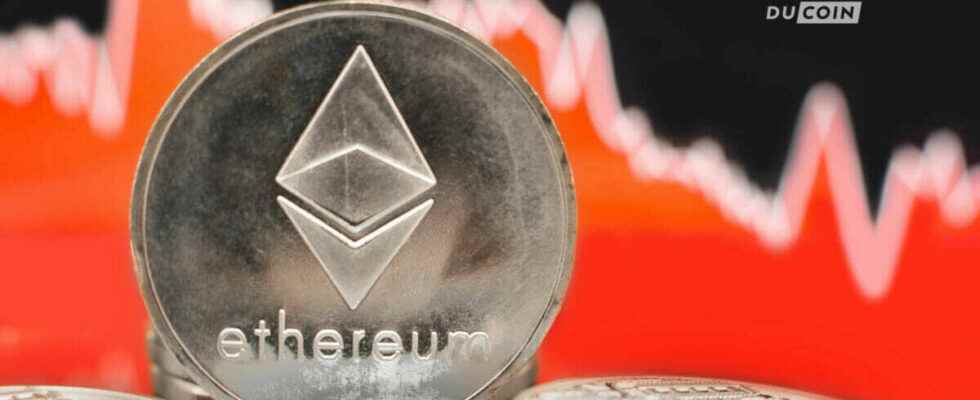Ethereum back to normal – During the previous bullrun, the network Ethereum had been the scene of a heavy congestion. Unsurprisingly, the latter led to a drastic increase in transaction fees. Fortunately, this situation has since calmed down and the fees on Ethereum have reached their lowest level for two years.
A real drop in fees on Ethereum
At the end of 2020, in parallel with the nascent bullrun, the Ethereum network saw a significant fee increase of transactions.
In fact, the latter encountered two periods of increase. A first increase between December 2020 and May 2021 during which the average fees reached $27. The second increase between July 2021 and May 2022 took the fees even higher with averages of up to $50.
However, since May 2022, the trend has calmed down. Indeed, since July, average costs have not not exceeded the bar $3. These costs fell again, reaching levels which had not been reached for two years.
We know it well. This reduction is not not the fruit of The Merge. Indeed, the Ethereum network recently finalized its transition from Proof of Work to Proof of Stake. However, no impact, either positive or negative, on costs was to be expected.
>> Gas? Nope ! Big returns on cryptos? Yes, and it’s on AscendEX (commercial link) <<
The Ethereum network still active
It would be easy to believe that this drop in fees is a function of a decrease in activity on Ethereum. However, this is far from the case. Indeed, since 2020, the transactions on this network oscillate between 1 and 1.7 million daily.
The same is true for the number of active wallets daily which oscillates around 500,000 since January 2021.
NFTs driving lower fees
But then, what factors could have led to this decline? Going back, we realize that the periods of high congestion correspond to phases where theenthusiasm around NFTs was the most important.
For many months, OpenSea was one of the most gas-consuming smart contracts on Ethereum. On average, OpenSea consumed 16,400 ETH gas per month. This average has since drastically loweredsince the NFT platform now only consumes 1,459ETH per month, i.e. a reduction of a factor of 10.
Of the layers 2 not yet impactful enough
At the same time, Ethereum has taken the path of second layers to improve the scalability of its network. Over the past year, these have been widely developed, helping to reduce congestion on the Ethereum network.
Indeed, the average transaction cost on these networks is between 10 to 100 times cheaper than those of Ethereum.
Unfortunately, these solutions still have a long way to go. Indeed, although the share of gas spent by layers 2 on Ethereum increases, it remains less than 2% in total transaction fees on Ethereum.
Either way, these second-tier solutions are constantly evolving. Now, the latter are trying to attract users by launching fun programs. This is particularly the case ofOptimism Questa program aimed at discover Optimismeverything by earning NFTs.
Scalability and Layers 2 make you blink? You will understand this later! Instead, come and seek returns for your cryptos by registering on AscendEX (commercial link).
